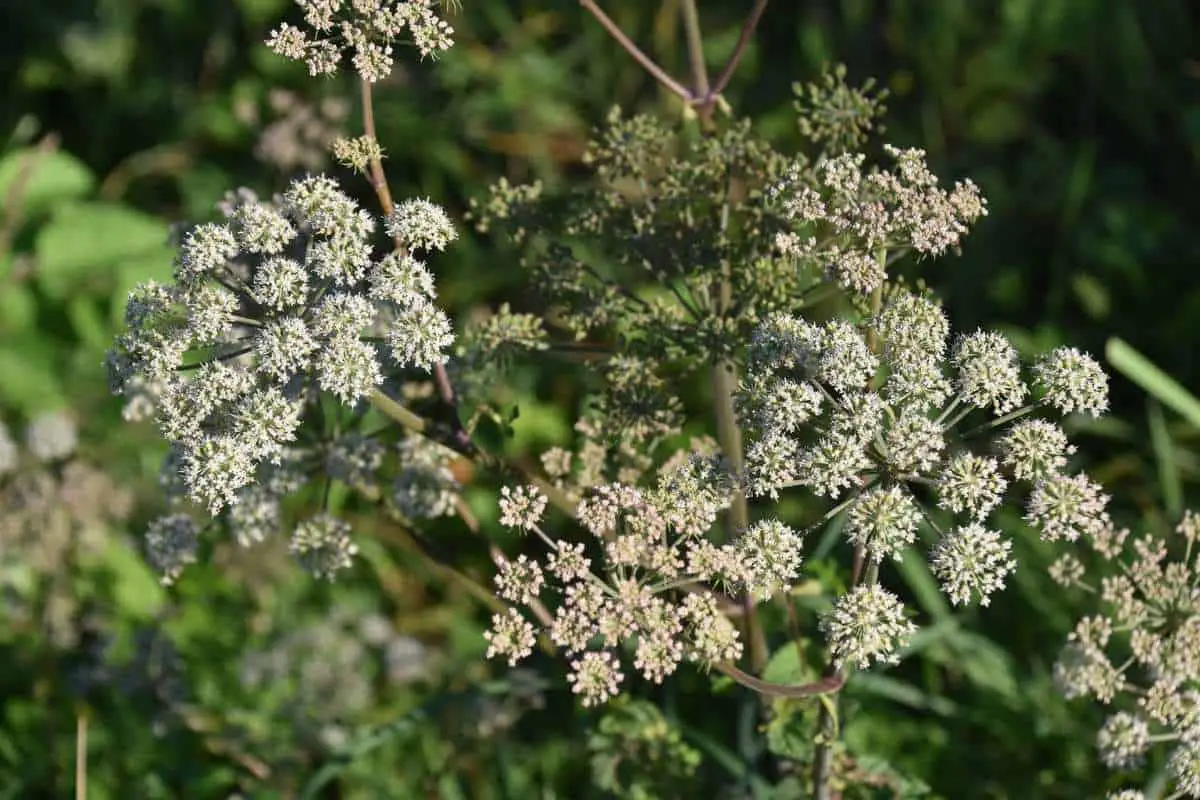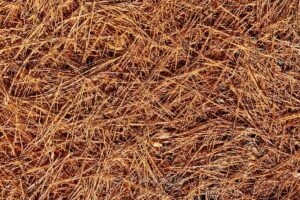This page may contain affiliate links. If you click and buy, we might get a small commission at no cost to you.
Weeds in New Mexico are frequently viewed as bothersome plants that spread out of control, but some weeds are actually beneficial to humans and nature. However, these plants have been observed growing in a variety of habitats where they are not welcome.
As gardeners, you need to know which are growing in your yard so you can manage them, and this article will show you some of the 15 weeds that you can find in this state.
15 Weeds in New Mexico
1. Wall rocket
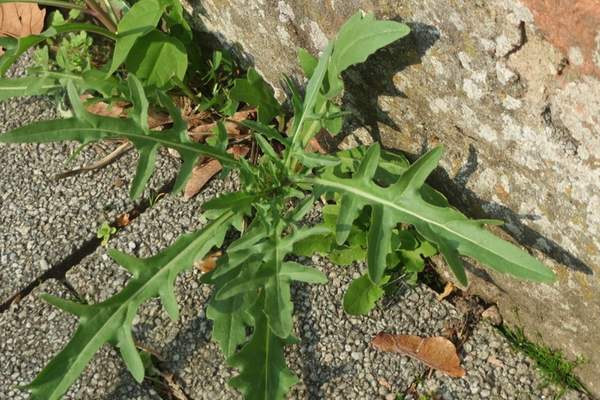
Scientific Name: Diplotaxis tenuifolia
Wall rockets are perennial weeds that are on New Mexico’s weed watch list. They have upright stems and flowers and a deep taproot.
They’re commonly found growing in fields, wastelands, and along roadsides. Wall rockets have also been observed growing on walls, fences, and other vertical surfaces. You can get rid of this plant by pulling it up by the roots where it was planted, or you can control it with herbicides.
2. Cheatgrass
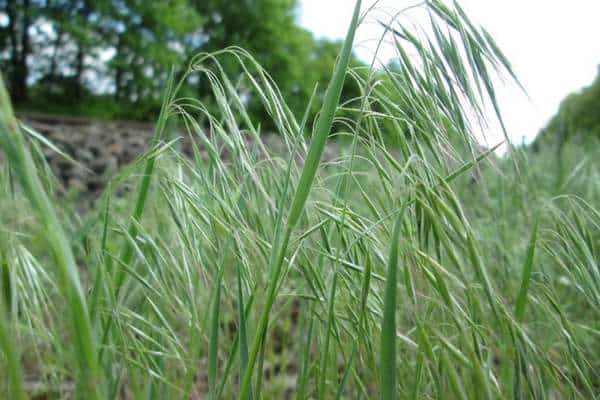
Scientific Name: Bromus tectorum
Cheatgrass is an annual grass that grows in disturbed areas. It can reach a height of 2 feet and is tan-green in color.
This grass can cause damage in any environment because it easily starts wildfires, killing many plants and animals. It’s hazardous to be close to houses because of their high flammability. The best way to get rid of or control cheatgrass is to keep a healthy vegetation community and consistently mow to reduce its production.
3. Meadow knapweed
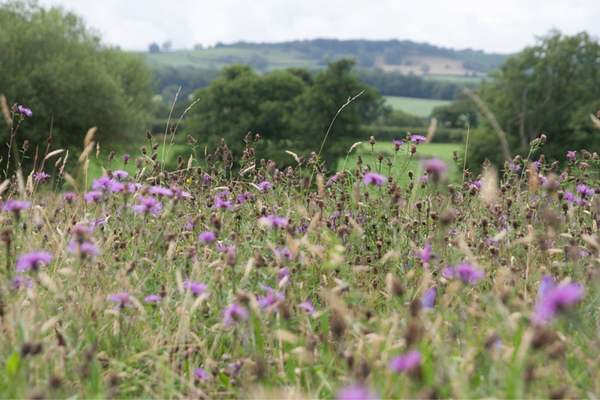
Scientific Name: Centaurea pratensis
Meadow knapweed is a perennial that can reach a height of four feet. It has purple flowers with many thin petals, as well as green stems covered in fine hairs. It grows in many parts of the United States, including New Mexico.
Meadow knapweed harms native plants because it outgrows them by growing faster and larger. To get rid of or control meadow knapweed, pull it out by hand as soon as you notice it growing.
4. Bull thistle
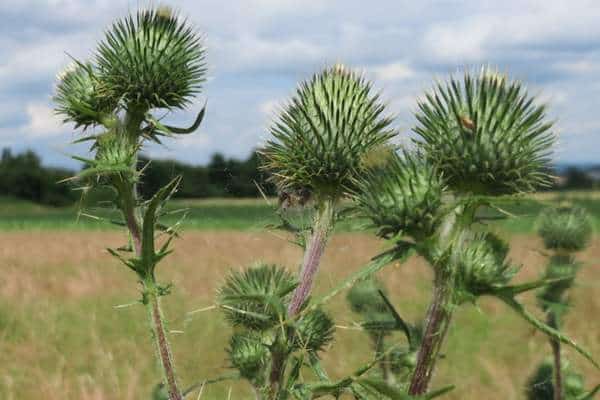
Scientific Name: Cirsium vulgare
Bull thistle is a large weed that can reach a height of 6 feet. The leaves are toothed and often hairy, and the stems have prickly shoots. Bull thistle grows in fields and along roadsides, but it thrives where the soil has been disturbed.
The weed is harmful to both plants and animals because of its prickly leaves, and it has a large seed bank that can last for 10 years. You can try pulling the plants up before they flower, but avoid mowing and burning them, as this will encourage growth.
5. Spiny cocklebur
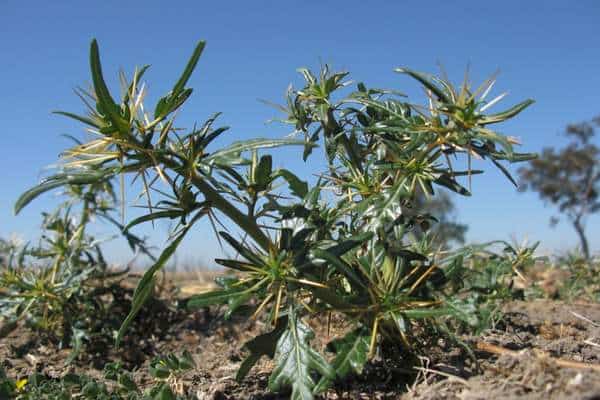
Scientific Name: Xanthium spinosum
Spiny cocklebur is a member of the sunflower family that thrives in moist to wet sandy loam soils. This weed doesn’t grow in full shade and should be removed manually before the burs develop.
This plant has yellowish spines on its stems and brown seeds that are toxic to animals. If it still persists, you can also use herbicides to get rid of it.
6. Pampas grass
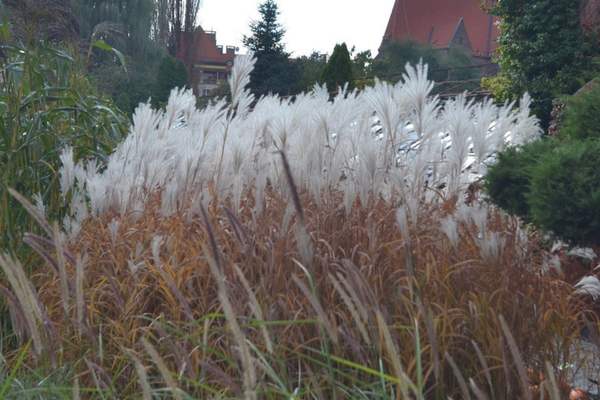
Scientific Name: Cortaderia selloana
Pampas grass is a plant that has recently become an invasive problem in the United States. It grows in warm climates, so you can find it in lawns, gardens, and other places where the seeds can germinate.
The weeds can grow up to 10 feet tall and have plumelike flowers that are white. Pampas grass is frequently found growing close together and competing for sunlight with other plants. They also spread quickly, so you can either grow desirable vegetation to replace them or manually cut them down.
7. Sahara mustard
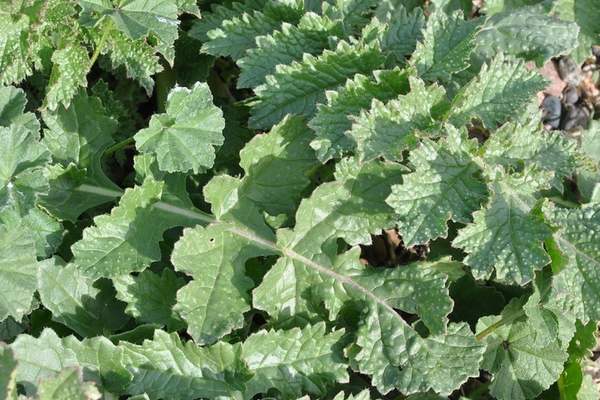
Scientific Name: Brassica tournefortii
Sahara mustard is one of the invasive species on the watch list in New Mexico. It has long leaves with 6-14 leaflets that can be covered in hair.
This is classified as an invasive species because it spreads rapidly and frequently takes over large areas of land. Other plants die as a result, which is bad for the environment. To keep this weed from spreading further, you can hand-pull it or mow it.
8. Musk thistle
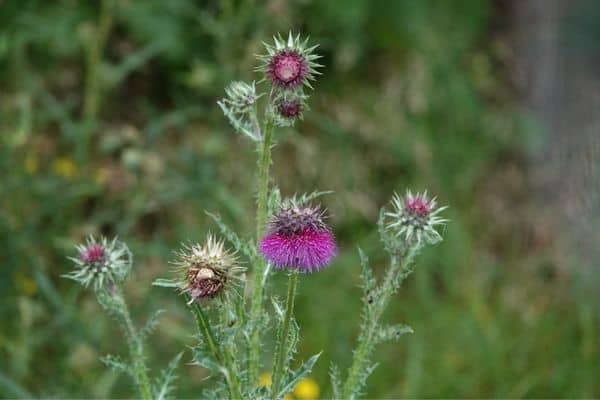
Scientific Name: Carduus nutans
Musk thistle is a flowering weed that thrives in moist soil. It has pink to purple flowers and dark green leaves with spiny margins. Musk thistle can reach a height of 6 feet and reproduces through seeds.
It can form a dense carpet and compete with other plants. To keep these weeds from spreading, remove them by hand, including the roots, and use herbicides if necessary.
9. Siberian elm
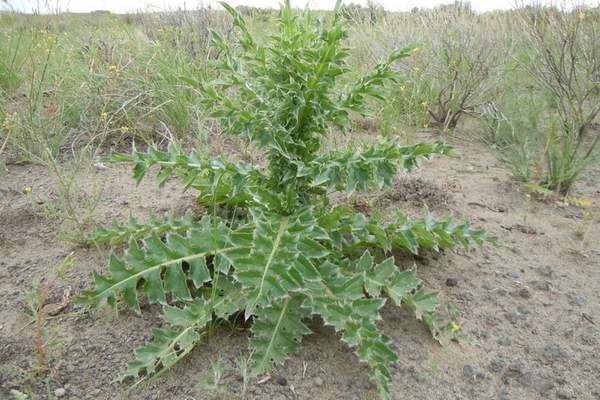
Scientific Name: Ulmus pumila
The Siberian elm is a common weed found in forests and other natural areas. This tree can withstand both hot and cold temperatures, as well as poor soil conditions.
The Siberian elm has the appearance of a small tree or bush. Its flowers are greenish in color and grow in clusters.
If you notice any of these plants growing in your yard, remove them immediately by hand or girding them, as they can spread quickly and easily.
10. Chicory
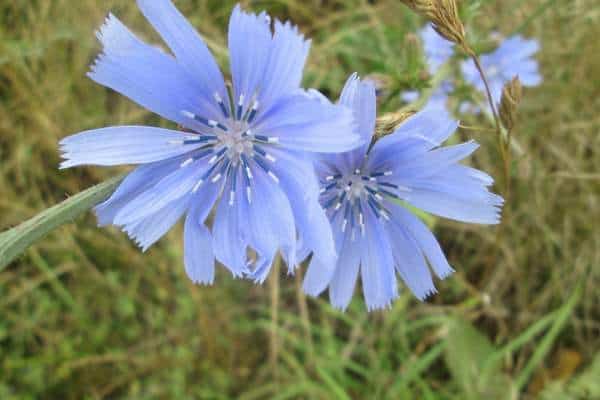
Scientific Name: Cichorium intybus
Chicory is a common garden weed that grows in several states. The plant has an upright stem that can reach a height of 5 feet.
The leaves on the stems are much smaller and have toothed to deeply lobed bases. The flowers are usually blue and resemble dandelion flowers, and they grow on long stalks from the center of the plant. This weed reproduces by seed, and proper cultivation can keep it from spreading.
11. Jointed goatgrass
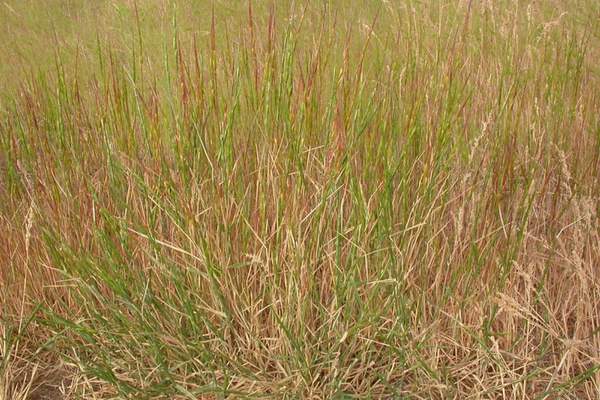
Scientific Name: Aegilops cylindrica
Jointed goatgrass is a weed that can be problematic for both farmers and gardeners. This plant grows quickly in many areas, competing for water and nutrients with other plants.
It prefers compacted soil and full sunlight, so it thrives in areas with both, such as wheatfields and grasslands. The plant grows tall and thin, with long, narrow leaves. To stop this plant from producing seeds, use tillage and hand roughing.
12. Common teasel
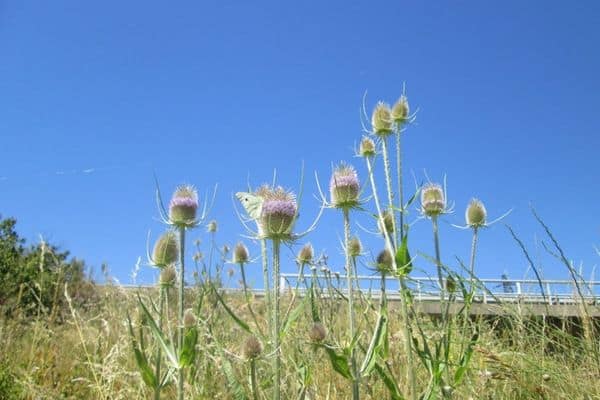
Scientific Name: Dipsacus fullonum
Teasel is a perennial herb that grows in open and sunny areas. It grows in fields, along roadsides, and on waste ground. Teasels bloom in late spring and early summer, with white to purple flowers that attract pollinators such as bees and butterflies.
Although common teasel has many uses, if it’s not properly controlled, this weed can compete with other native plants and eventually take over the entire area. Mow the flowering stems before they produce flowers to avoid this.
13. Russian olive
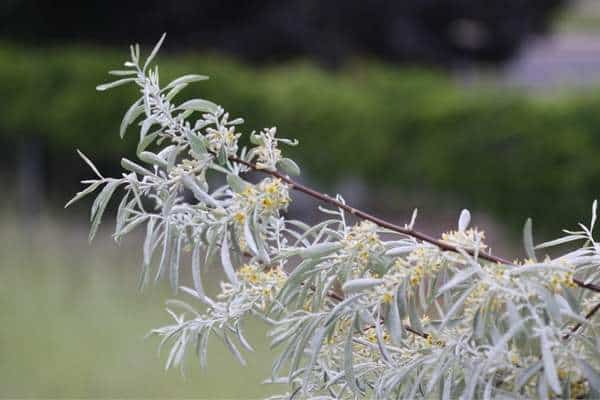
Scientific Name: Elaeagnus angustifolia
Russian olive is a small tree that may harm native plants in its vicinity. This invasive species is problematic because it can grow in a wide range of sandy and loamy soil habitats, including urban areas, where it can crowd out native plants.
The tree also absorbs groundwater, making it difficult for other plants to grow. It can grow up to 10 feet tall, with gray or brown bark and yellow or white flowers that grow in clusters.
14. Salt cedar

Scientific Name: Tamarix ramosissima
Saltcedar is a highly invasive and fast-growing weed that can cause serious environmental damage because it secretes a high concentration of salt into the ground, affecting the growth of other plants. It can reach a height of 25 feet and has numerous barks and stems.
They also have white to dark pink flowers and can spread via seeds. You can prevent this weed from spreading by removing its roots or planting native plants that compete with its seeds.
15. Poison hemlock

Scientific Name: Conium maculatum
Poison hemlock is distinguished by its small white flowers that resemble Queen Anne’s Lace and triangular leaves with toothed leaflets. This is a poisonous plant that can be fatal if consumed. One of the best ways to get rid of this weed in your yard is to cultivate it or mow it repeatedly and use herbicides.
